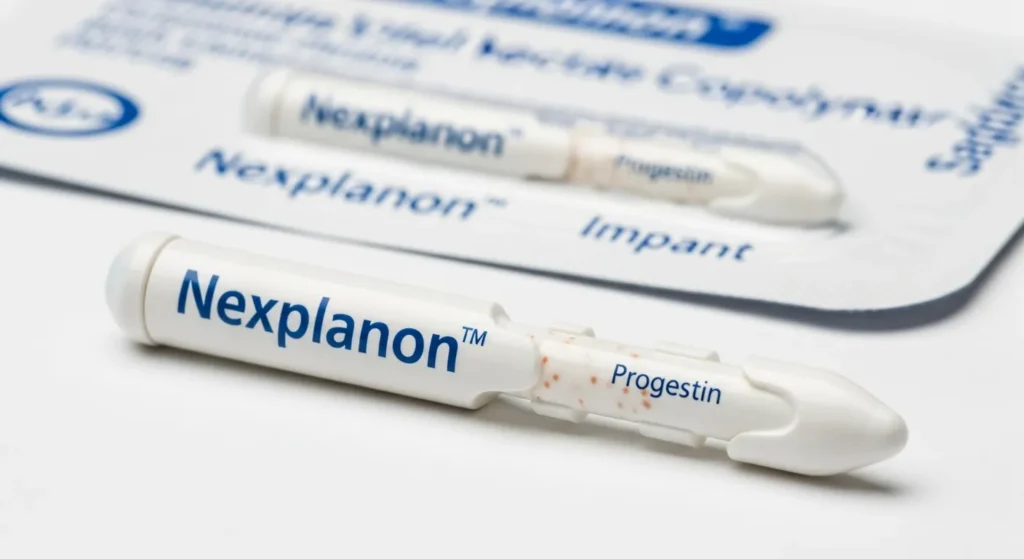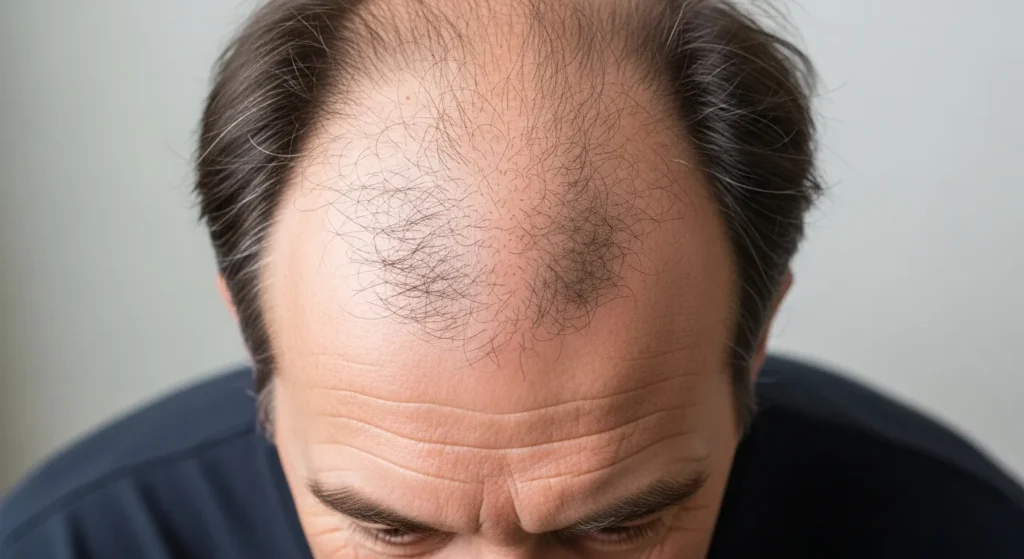Concerned about Nexplanon and hair loss? You’re not alone. While Nexplanon is a popular birth control implant, some users experience unexpected hair thinning or shedding.
This article explores why hair loss can occur with Nexplanon, who’s most at risk, and how to manage or reverse the issue. With expert insights and real user experiences, this medically reviewed guide offers clarity, reassurance, and actionable advice to help you regain control over your hair health.
What is Nexplanon? Quick Overview

Nexplanon is a small, flexible contraceptive implant placed under the skin of your upper arm. It releases etonogestrel, a synthetic form of progestin, which helps prevent pregnancy for up to 3 years.
How the Implant Works
- Stops ovulation
- Thickens cervical mucus to block sperm
- Alters the uterine lining to prevent implantation
Common Side Effects
- Irregular menstrual bleeding
- Mood changes
- Weight gain
- Hair thinning or shedding (in rare cases)
Is Hair Loss a Known Side Effect?
Yes, hair loss is a reported side effect of Nexplanon, although it affects a small percentage of users. According to patient reports and clinical data, some individuals notice increased shedding a few weeks to months after insertion.
Prevalence & User Experiences
- Clinical trials: ~1-4% of users report hair loss
- Online forums and reviews show higher anecdotal rates
- Often described as telogen effluvium (a temporary shedding phase)
Types of Hair Loss Observed
- Telogen Effluvium: Excess hairs enter the resting phase due to hormonal shifts
- Androgenic Alopecia: Hormonal imbalance accelerates genetically predisposed hair loss
Why It Happens: Hormonal Mechanisms
Hormones play a central role in hair growth. Nexplanon’s active hormone, etonogestrel, may trigger hair loss in sensitive individuals.
Role of Progestin and Androgenic Activity
- Etonogestrel can exhibit mild androgenic (male hormone-like) effects
- Androgens shrink hair follicles in genetically predisposed individuals
Who’s at Risk?
You may be more likely to experience hair loss if you:
- Have a family history of female pattern baldness
- Are sensitive to hormone changes
- Live with conditions like PCOS or thyroid disorders
Timeline: Onset and Progression
- Shedding typically begins 2–4 months post-insertion
- Can persist or stabilize depending on individual response
Will My Hair Grow Back? What the Research Says
The good news? Hair often regrows once hormonal levels stabilize, especially if the hair loss is due to telogen effluvium.
Recovery Timeline
- Regrowth begins 3–6 months after removal
- Full recovery may take 6–12 months
However, if the hair loss is androgenic, it may not reverse entirely without treatment.
Medical Advice
Always consult a:
- A dermatologist to assess the type of hair loss
- An endocrinologist is consulted if a hormone imbalance is suspected
How to Manage or Mitigate Hair Loss
Don’t panic—there are ways to manage or even reverse Nexplanon-related shedding.
Step 1: Get Evaluated
- Blood tests for hormones, iron, and thyroid function
- Scalp examination by a dermatologist
Step 2: Try Targeted Treatments
- Topical Minoxidil: FDA-approved for female pattern hair loss
- Low-androgen birth control pills (consult your doctor before switching)
- Biotin and Iron supplementation if deficient
Step 3: Consider Removal
You may choose to remove Nexplanon if:
- Hair loss is severe or emotionally distressing
- You’ve ruled out other causes
- You’ve discussed alternatives with a healthcare provider
Comparing Contraception Options & Hair Health
Not all hormonal contraceptives affect hair the same way.
Nexplanon vs Other Implants or IUDs
- Nexplanon: Progestin-based; may cause hair loss in sensitive users
- Hormonal IUDs (e.g., Mirena): Also progestin-based, but with lower systemic absorption
- Copper IUDs: Non-hormonal, no effect on hair
Oral Contraceptives
Some pills are anti-androgenic, which can improve hair quality. Examples:
- Yaz
- Diane-35 (not available everywhere)
Always consult a gynecologist to determine the best option for your needs.
Suggested Citations
- BMJ SRH: Contraceptive Implant and Alopecia Case Report
- Neofollics: Hormonal Birth Control and Hair Loss Mechanism
When to See a Specialist
If you’re experiencing:
- Excessive daily hair shedding (over 100 strands)
- Bald patches or scalp visibility
- Anxiety or self-esteem issues related to hair loss
It’s time to consult a:
- Dermatologist (for hair/scalp exam)
- Gynecologist (for contraceptive review)
- Trichologist (for non-medical hair care support)

FAQs
Can Nexplanon cause permanent hair loss?
Not usually. Most hair loss is temporary, but prolonged shedding could indicate androgenic alopecia.
When should I see a dermatologist?
If hair loss continues for more than 3 months, or you notice visible thinning patches.
Will removing Nexplanon stop hair loss immediately?
Not instantly. It may take a few months for hormones to stabilize and hair to regrow.
Can vitamins like biotin help?
Only if you have a deficiency. Avoid high-dose supplements without consulting a doctor.
Is switching to another contraceptive safer for hair?
Low-androgen pills may be better tolerated by women prone to hair loss.
Take Your Next Step
Worried that your birth control might be causing hair loss? Don’t wait. Book a consultation with Dr. Rana Irfan or Dr. Uzma Irfan in Islamabad to get personalized advice, diagnostic evaluation, and solutions tailored to your needs. Your hair—and your confidence—deserve expert care.
